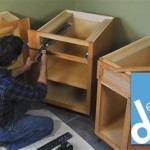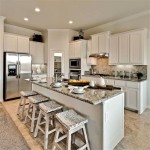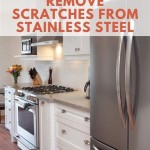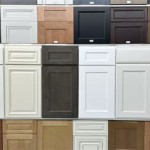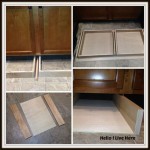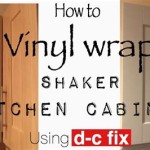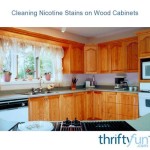Affordable Quality Kitchen Cabinets: Balancing Cost and Craftsmanship
The kitchen stands as a focal point within any home, often serving as a gathering place for family and friends. A kitchen's functionality and aesthetic appeal are largely determined by its cabinetry. Selecting kitchen cabinets involves a careful balancing act between cost and quality. While high-end, custom-built cabinetry represents a significant investment, a wide range of affordable quality options exist that can transform a kitchen without breaking the bank. This article explores the key factors to consider when searching for affordable quality kitchen cabinets, focusing on materials, construction methods, and strategic purchasing decisions.
Understanding Cabinet Materials and Their Impact on Cost and Durability
The type of material used in cabinet construction fundamentally impacts both the price point and the longevity of the cabinets. Common materials include solid wood, plywood, particleboard, and medium-density fiberboard (MDF). Each material possesses distinct characteristics that influence its suitability for kitchen cabinetry. Properly understanding each can assist greatly in deciding what works best for a renovation.
Solid Wood: Solid wood is generally considered the premium choice for cabinetry, renowned for its natural beauty, strength, and durability. Hardwoods like maple, oak, and cherry are particularly popular due to their resistance to dents and scratches. However, solid wood cabinets are typically the most expensive option. It is important to note that solid wood can expand and contract with changes in humidity, which can lead to warping or cracking over time. This is less of a concern with properly seasoned and kiln-dried lumber.
Plywood: Plywood consists of multiple layers of wood veneer glued together. This construction method provides exceptional strength and stability, making plywood a very reliable material for cabinet boxes. Plywood is less susceptible to warping than solid wood and offers a smooth surface for painting or staining. While still more expensive than particleboard or MDF, plywood represents a cost-effective alternative to solid wood that offers excellent durability.
Particleboard: Particleboard, also known as chipboard, is made from wood chips and resin compressed under high pressure. It's a budget-friendly option, making it appealing for individuals seeking affordable kitchen cabinets. However, particleboard is less dense and less resistant to moisture than solid wood or plywood. Prolonged exposure to water can cause particleboard to swell and disintegrate. Particleboard is typically used for cabinet boxes and shelves in lower-priced cabinet lines. It is often surfaced with melamine or laminate to improve its appearance and water resistance.
Medium-Density Fiberboard (MDF): MDF is an engineered wood product similar to particleboard but denser and more uniform in composition. It's made from wood fibers and resin, compressed under high pressure. MDF offers a smooth, stable surface that is ideal for painting. It's less prone to warping than solid wood and provides a more consistent surface than particleboard. While more expensive than particleboard, MDF remains a cost-effective option for cabinet doors and drawer fronts, especially those with intricate designs or profiles.
Evaluating Cabinet Construction Methods for Strength and Longevity
Beyond the material itself, the way in which a cabinet is constructed significantly impacts its overall strength and lifespan. Several construction methods are commonly used in the kitchen cabinet industry, each offering varying degrees of durability and cost-effectiveness. The types of construction include framed and frameless cabinets.
Framed Cabinets: Framed cabinets, also known as face-frame cabinets, feature a solid wood frame attached to the front of the cabinet box. This frame provides additional structural support and creates a decorative element. The doors and drawers are then attached to this frame. Framed cabinets are a traditional style and offer a wide range of design options. The frame allows for more flexibility in door and drawer styles, including inset, partial overlay, and full overlay options. Inset doors and drawers fit flush with the frame, creating a clean, streamlined look. Partial overlay doors and drawers cover part of the frame, while full overlay doors and drawers cover nearly the entire frame, providing a more modern appearance.
Frameless Cabinets: Frameless cabinets, also known as European-style cabinets, lack the face frame found in traditional framed cabinets. The doors and drawers attach directly to the sides of the cabinet box. This construction method offers a sleek, modern aesthetic and maximizes interior storage space. Because there is no frame to obstruct access, frameless cabinets typically provide slightly more usable space than framed cabinets of the same external dimensions. Frameless cabinets are generally constructed with thicker materials to compensate for the absence of a face frame. This ensures the cabinet box remains strong and stable.
Regardless of whether the cabinets are framed or frameless, the joinery methods used to assemble the cabinet box are crucial to its strength. Dovetail joints, which interlock two pieces of wood with precision-cut pins and tails, are considered the strongest and most durable type of joint. Dowel joints, which use cylindrical wooden pegs to join two pieces of wood, offer a good balance of strength and affordability. Stapled or glued joints, while less expensive, are generally less durable than dovetail or dowel joints. It is crucial to carefully consider the joinery method used when evaluating the quality of kitchen cabinets.
Strategic Purchasing Decisions to Maximize Value and Minimize Costs
Obtaining affordable quality kitchen cabinets often involves strategic purchasing decisions. Several factors can influence the final cost of a kitchen cabinet project, including choosing the right retailer, opting for RTA (Ready-to-Assemble) cabinets, and being mindful of the finish and hardware selections.
Choosing the Right Retailer: The price of kitchen cabinets can vary significantly depending on the retailer. Big-box home improvement stores offer a wide selection of cabinets at various price points. However, their quality may be inconsistent. Local kitchen cabinet dealers often offer a more curated selection of higher-quality cabinets and can provide personalized design assistance. Online cabinet retailers offer a convenient way to compare prices and styles from multiple manufacturers. However, it is important to carefully research the retailer's reputation and return policy before making a purchase. Reading online reviews and checking for independent certifications can help ensure a positive purchasing experience.
RTA Cabinets: Ready-to-Assemble (RTA) cabinets, also known as flat-pack cabinets, are shipped unassembled, requiring the homeowner or contractor to assemble them on-site. This reduces shipping costs and often results in lower overall prices compared to pre-assembled cabinets. RTA cabinets are available in a wide range of styles and materials, offering a cost-effective way to achieve a custom look. However, assembling RTA cabinets can be time-consuming and requires some basic woodworking skills. It is crucial to carefully follow the manufacturer's instructions and use appropriate tools to ensure proper assembly. Some retailers also offer assembly services for an additional fee.
Finish and Hardware Selection: The finish and hardware chosen for kitchen cabinets can significantly impact the overall cost. Painted finishes are generally more expensive than stained finishes, as they require more preparation and multiple coats of paint. Thermofoil finishes, which are applied to MDF or particleboard, offer a durable and easy-to-clean surface at a relatively affordable price. The type of hardware selected, such as knobs, pulls, and hinges, can also affect the total cost. Simple, standard hardware is generally less expensive than designer hardware with intricate designs or unique finishes. Opting for more affordable hardware options can help reduce the overall cost of the kitchen cabinet project without sacrificing functionality. However, it is essential to choose hardware that is durable and well-made to ensure it can withstand daily use.
Furthermore, during installation, opting for a standard layout versus a complex, custom design can aid in cost savings. Keeping plumbing and electrical configurations in the same area reduces re-routing costs. Consider doing demolition and simple tasks yourself, but always rely on a professional for more complex procedures.

The Best Inexpensive Kitchen Cabinets 2024

How To Get A Stunning Kitchen On Budget

Affordable Kitchen Cabinet Ideas The Home Depot

How To Find The Best Kitchen Cabinets 2024 Guide Forbes Home

9 Best Kitchen Cabinets Of 2024

9 Best Kitchen Cabinets Of 2024

Get The Most Affordable Premium Kitchen Cabinets

11 Best Kitchen Cabinets In 2024 Our Top Picks

Top 18 High Quality Kitchen Cabinet Options

7 Ways To Make Your Kitchen Cabinets Look Expensive
Related Posts

